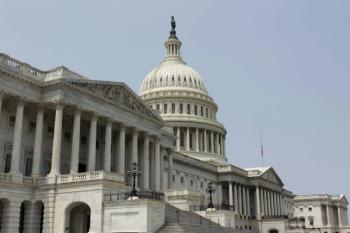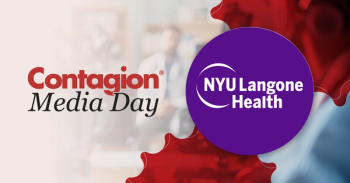
- August 2020
- Volume 5
- Issue 4
COVID-19 and Its Disproportionate Impact on Racial and Ethnic Minorities in the United States
“Health disparities adversely affect groups of people who have systematically experienced greater social or economic obstacles to health….” —Healthy People 2020
What Do We Mean by Health Disparities?
The term “health disparity” was first used in the United States around 1990. It was intended to denote that worse health existed among socially disadvantaged people and, in particular, members of certain racial and ethnic groups and those who were economically disadvantaged. Today, health disparities is a much broader term and refers to differences in health and health care among population groups. Disparities occur across many dimensions, including race, ethnicity, socioeconomic status, age, location, gender, disability status, and sexual orientation. Disparities in health results in some groups receiving less or lower-quality health care than others and experiencing poorer outcomes. Health disparities result in increased morbidity and mortality and unnecessary costs.
Health inequalities among racial minorities in this country are pronounced, persistent and pervasive.1 Without doubt, some of these differences are rooted in health and social conditions that have existed for decades and that can be summarized as “structural racism.” Structural racism refers to the ways in which societies reinforce systems of housing, education, employment, earnings, benefits, credit, media, health care, and criminal justice that foster racial discrimination.2 Thus, it is important that we recognize that at the heart of most health disparities are concerns about social justice, and that without addressing policies and practices in housing, education, employment, health care, and criminal justice that foster racial discrimination, health disparities will never cease to exist.
Health Disparities in COVID-19
The coronavirus disease 2019 (COVID-19) pandemic has been characterized by enormous health disparities both in the United States and abroad. In the U.S., African Americans are contracting SARS-CoV-2 at higher rates, and they are more likely to die from COVID-19 than whites. Infection rates are more than 3-fold higher and death rates are 6-fold higher in predominantly black/African American counties compared with predominantly white counties.3 Hispanics/LatinX are also being disproportionately impacted. In California, LatinX represent 70% of all COVID-19 deaths in the group of people aged 18 to 49 years, despite making up just 43% of that population. Other historically marginalized communities, such as American Indians, are also experiencing some of the highest rates of COVID-19.4 Nationally, age-adjusted hospitalization rates for COVID-19 are approximately 5-times higher for American Indians, Alaska natives, and Blacks, and 4 times higher for LatinX persons, compared with non-Hispanic white persons (Figure).5
CDC data shows that LatinX people between the ages of 40 and 59 years have been infected at 5 times the rate of white individuals in this age category, but this difference is even more dramatic when looking at deaths of LatinX persons with COVID-19 who died, more than a quarter were younger than 60, although among white persons, only 6% were that young.6 Multigenerational households are also common among minority populations, resulting in an increased risk for older individuals living with grandchildren.
These racial/ethnic disparities are not unique to the US. In the United Kingdom, Black and South Asian individuals are at higher risk of dying from COVID-19 compared with white persons after adjusting for other factors.7
There are many reasons that racial and ethnic minori- ties have been disproportionately affected by COVID-19, but social and economic disadvantages are likely significant contributors. A disproportionate number of minorities live in small apartments and houses in which it is difficult to isolate when sick; in addition, many are frontline service workers who don’t have the luxury of staying at home and teleworking.
Poverty has long been recognized as a contributor to death and disease, but the striking differences in racial and ethnic impact of COVID-19 provide an opportunity to reaffirm the link between income and health. In the case of millions of the “working poor”—individuals who have a job that does not provide health benefits but make too much money to qualify for Medicaid—lack of access to health care is among the most serious challenges they face. However, health care accounts for some 10% to 20% of the determinants of health, while socioeconomic factors and factors related to the physical environment are estimated to account for up to 50% of the determinants of health.8
Furthermore, strong evidence linking income and health suggests that policies promoting economic equity may have broad health effects. Social vulnerability is a term that refers to the resilience of communities when confronted by external stresses on health such as a pandemic. CDC’s Social Vulnerability Index (SVI) uses 15 census track variables to help identify communities at greater risk.9 In an effort to quantify and better inform the relation- ship between community-level social disadvantage and incidence of COVID-19, investigators at Emory University examined the association of SVI scores with the case- fatality rate and incidence of COVID-19.10 Their data suggest that a higher SVI score is associated with a higher case-fatality rate, an association that strengthened after adjustment for age and for comorbidities. This association exists in more than 1 in 4 counties in the United States and suggests that these counties should be targeted by public policy interventions. The COVID-19 Health Equity Interactive Dashboard developed by the same group allows users to visualize the relationship between the virus’s health impact and social determinants of health at a county level.11
Health Equity Is the Road to Ending COVID-19
Health equity is the principle underlying the commitment to reduce and ultimately eliminate health disparities. It means striving for the highest possible standard of health for all people and giving special attention to the needs of those at greatest risk or who have poor health because of social conditions. A potential “silver lining” of COVID-19 is that it could be seen as an impetus and opportunity to develop strategies that would begin to finally eliminate inequalities in health in the United States, thus achieving health equity. The first step is to acknowledge that health disparities related to COVID-19 are not the fault of those who are experiencing them, but rather the consequence of social policies and systems that create and perpetuate inequalities. As Williams and Cooper state in a recent Journal of the American Medical Association editorial, this is an opportunity to develop a new kind of “herd immunity.” By improving current policies and implementing new ones, making the investments necessary to decrease social determinants of health among the poor and disenfranchised, we will all be better protected from future pandemics.12
Del Rio is Distinguished Professor of Medicine at Emory University School of Medicine and the executive associate dean for Emory at Grady. He is also professor of global health and epidemiology at the Rollins School of Public Health and co-director of the Emory Center for AIDS Research and co-primary investigator of the Emory Vaccine and Treatment Evaluation Unit.
References:
- Sondik EJ, Huang DT, Klein RJ, Satcher D. Progress toward the Healthy People 2010 goals and objectives. Annu Rev Public Health. 2010;31:271-281 4 p following 28 doi:10.1146/annurev.publhealth.012809.103613
- Bailey ZD, Krieger N, Agénor M, et al. Structural racism and health inequities in the USA: evidence and interventions. Lancet. 2017;389(10077):1453-1463. doi:10.1016/S0140-6736(17)30569-X
- Yancy CW. COVID-19 and African Americans. JAMA. Published online April 15, 2020. doi:10.1001/jama.2020.6548
- UCLA project tracks COVID-19 case rate by tribal nation. UCLA. May 18, 2020. Accessed July 7, 2020. https://lasocialscience.ucla.edu/2020/05/18/ucla-project-tracks-covid-19-case-rate-by-tribal-nation/
- COVID-19 in racial and ethnic minority groups. CDC. Updated June 25, 2020. Accessed on July 7, 2020. https://www.cdc.gov/coronavirus/2019-ncov/need-extra-precautions/racial-ethnic-minorities.html
- Oppel RA Jr, Gebeloff R, Lai KKR, et al. The fullest look at the racial inequality of coronavirus. New York Times. July 5, 2020. Accessed on July 7, 2020. Williamson EJ, Walker AJ, Bhaskaran K, et al. Available at: https://www.nytimes.com/interactive/2020/07/05/us/coronavirus-latinos-african-americans-cdc-data.html
- Williamson EJ, Walker AJ, Bhaskaran K, et al. OpenSAFELY: factors associated with COVID-19 death in 17 million patients. Nature July 8, 2020. https://doi.org/10.1038/s41586-020-2521-4.
- National Academies of Sciences, Engineering, and Medicine. Investing in Interventions That Address Non-Medical, Health-Related Social Needs: Proceedings of a Workshop. The National Academies Press; 2019. doi:10.17226/25544
- Agency for Toxic Substances and Disease Registry. CDC’s Social Vulnerability Index (SVI). Available at: https://svi.cdc.gov/ Accessed on July 10, 2020.
- Nayak A, Islam SJ, Mehta A, et al. Impact of social vulnerability on COVID-19 incidence and outcomes in the United States. Version 2. medRxiv preprint. Published April 14, 2020. https://www.medrxiv.org/content/1101/2020.04.10.20060962v2. doi:1101/2020.04.10.20060962
- COVID-19 health equity interactive dashboard. Emory University. 2020. Accessed on July 8, 2020. https://covid19.emory.edu/
- Williams DR, Cooper LA. COVID-19 and health equity—a new kind of “herd immunity”. JAMA. Published online May 11, 2020. doi:10.1001/jama.2020.8051.
Articles in this issue
over 5 years ago
Antiretroviral Stewardship: The Time is Nowover 5 years ago
Using IL-6 Inhibitors to Treat COVID-19over 5 years ago
Hydroxychloroquine for COVID-19: A Lesson in Study QualityNewsletter
Stay ahead of emerging infectious disease threats with expert insights and breaking research. Subscribe now to get updates delivered straight to your inbox.




